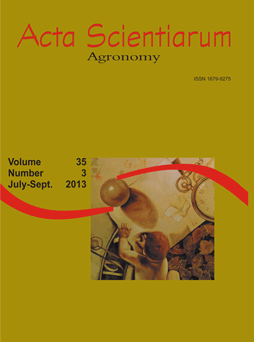<b>The management of cover plant residues for cotton cropped in a no-tillage system</b> - doi: 10.4025/actasciagron.v35i3.15294
Abstract
The cutting of plant residue in no-tillage systems under certain environmental conditions becomes necessary to adequately establish and grow crops. This study aims to assess the effect on the yield of different methods of managing millet plant residue in cotton plantations. The study was conducted during the agricultural years 2006/07 and 2007/08, and the treatments included no-mechanical-treatment tillage and the use of a rotary shredder, crimper-roller, and mechanical disintegrator for millet plants before sowing the cotton. Evaluations were performed for the residue fragmentation, emergence speed, percent of soil cover during the cycle and yield of the cotton crop. The emergence speed was faster in the management with the rotary shredder. In 2006/07, the no-tillage treatment showed a rate of loss for soil cover that was 46 percent greater than the disintegrator treatment. The rotary shredder and the disintegrator yielded greater soil coverage during the cultivation cycle, and the yield was highly correlated with the soil cover at 75 days after emergence. The management of the millet residue affected the cotton plants for the two-year study period.
Downloads
DECLARATION OF ORIGINALITY AND COPYRIGHTS
I Declare that current article is original and has not been submitted for publication, in part or in whole, to any other national or international journal.
The copyrights belong exclusively to the authors. Published content is licensed under Creative Commons Attribution 4.0 (CC BY 4.0) guidelines, which allows sharing (copy and distribution of the material in any medium or format) and adaptation (remix, transform, and build upon the material) for any purpose, even commercially, under the terms of attribution.




















































